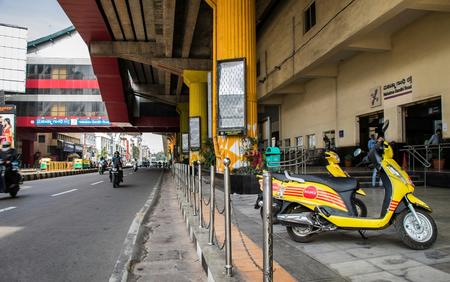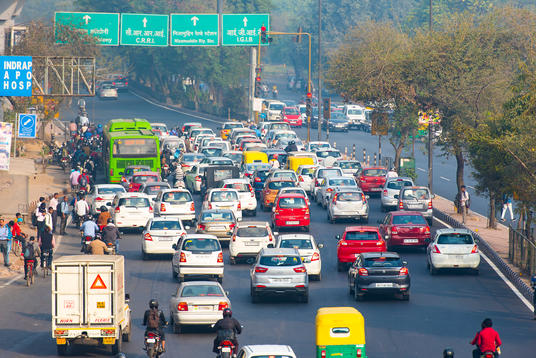India is home to seven of the top 10 most polluted cities in the world, underlining the need for cleaner transport solutions. Why then are Electric Vehicles (EVs) seen as a distant reality? Atul Mudaliar, Head of Business Actions, the Climate Group, India separates fact from fiction and looks ahead to India’s electric mobility future.
India is a prime market for electric transport with huge EV potential. The industry, with support from government policy, is innovating on new products, building supporting infrastructure, and experimenting with new ways of financing. Yet when the Climate Group set out to understand things better, especially from a business perspective, we found that a part of the challenge for EVs was the long-standing myths around them.
These myths are making consumers (including personal and commercial EV buyers) largely hesitant in completely trusting EVs as a viable transport option.
How then can we change the notions commonly held about EVs in a dynamic country like India?
This got us thinking. We reached out to a forum of industry experts, policymakers, and our EV100 member companies to help bring the myths to the fore. In doing so, we found phenomenal innovation across value chains and novel business models backed by rich on-ground experience for the deployment of EVs and chargers.
The myths broken down
Our learnings from this exercise brought out clear insight into charging, EV technology, the economy of EVs in the Indian context, policy, vehicle experience, and emissions. We were thrilled to bring this together succinctly in an infographic:
EV India Myth Buster Inforgraphic
Size: 557.41 KB
Date added: 03/06/21
EV Charging - Myth: We need a dense public fast-charging network
FACT: From global examples, regular home or destination slow Alternating Current (AC) charging infrastructure should suffice for most uses (70-80%). Direct Current or DC fast charging would be required only in cases of highway charging or commercial charging where vehicle utilization is high, and vehicle idle time is low.
Click here to read the full article by Maxson Lewis, Managing Director, Magenta Power – ChargeGrid
EV Technology - Myth: EVs are slow and have a limited range
FACT: Electric cars and high-speed electric two-wheelers have advanced high-performance ‘powertrains’. These vehicle systems can offer better acceleration in comparison to Internal Combustion Engine (ICE) powertrains and allow comfortable speeds for intra-city driving.
From a sample size of 85 e-2-wheeler models and 5 e-car models on the Indian market today, the average range was 84 Kilometres (KMS) and 300km per charge respectively, which is more than enough for day-to-day use.
Click here to read the full article by Jyoti Gulia, Director – JMK Research and Analytics
EV Economics - Myth: Electric vehicles are more expensive than ICE vehicles
FACT: When comparing the upfront cost, fuel costs, and maintenance costs, we find that running EVs for more km/day results in substantial fuel cost savings over ICE vehicles, making EVs much cheaper over their lifetimes.
Click here to read the full article by Falgun Patel, The Climate Group, and Nishant Saini, Founder & Managing Director – eeeTaxi
EV Policy - Myth: There is no government support for electric vehicles in India
FACT: In India, governments (Central and State) have consistently promoted the manufacturing and adoption of EVs. Capital subsidies on purchase of EVs under Faster Adoption and Manufacturing of Electric Vehicles II (FAME II), Goods & Services Tax (GST) on EVs has been reduced from 12% to 5%, an income tax deduction of INR 1,50,000+ can be claimed on the interest paid on loans taken for EVs.
Click here to read the full article by Charu Lata, Lead Consultant – Electric Mobility, NRDC India

Vehicle experience and shared mobility - Myth: EVs give unsatisfactory vehicle experiences and electrified shared mobility could lead to range anxiety
FACT: Today’s new-age electric vehicles are adequately powered and can achieve speeds like ICE vehicles. The EV transition has allowed automakers to integrate technology like Artificial Intelligence and IoT, thereby enhancing user experience.
Shared e-mobility is an essential solution to solve congestion in cities. The average daily run of a vehicle in a city is much lower than the corresponding average EV range. With tech-enabled shared e-mobility infrastructure, the user is always aware of the estimated remaining range and nearest charging/battery-swapping station, making range anxiety a non-issue.
Click here to read the full article by Vinay Rotti, Head – Policy & Strategic Finance at Bounce and Pradeep Karuturi, Policy and Government Partnerships at Bounce
EVs and emissions - Myth: Charging EVs with India's electricity grid is worse than driving ICE vehicles
FACT: Transport and Environment finds that EVs manufactured and charged with Poland's electricity reduce CO2 emissions by ~29% compared to average of petrol and diesel CO2 emissions. India, in fact, has a slightly better grid emission factor than Poland, which means EVs already reduce emissions.
Click here to read the full article by Abhishek Ranjan – Energy and Electric Mobility Industry Expert in India

What next?
It is necessary for a myth to be proven right or wrong for it to emerge as a fact. Like many transitions witnessed in the technology domain, EV myths in India too will have to traverse this journey to see where we are now and find integrated and innovative ways to move forward. However, we now know that they are naturally conquerable, and will change over time.
With transport being a major contributor to CO2 emissions, addressing transport-related pollution and driving clean mobility solutions now can be a major lever in helping India meet its goals under the Paris Agreement. We have nine years to halve carbon emissions, making it even more critical to embrace low-hanging fruit such as shared, electric mobility for India. Continued efforts in driving clear and evidence-based insights and asking the right questions to evolve further our EV ecosystem offers huge potential for us to do so.
Both governments and businesses have taken on this challenge. More than ten states and Union territories have EV policies in place, and the Centre has long been pushing its novel FAME Scheme to accelerate the adoption of EVs across the country. The news of Tesla’s debut in India next year is a boost for the EV market, especially for a brand-conscious Indian consumer. However, this market scale is innately small for it to generate a rapid transformation in favour of electric mobility widely and at scale. Our markets are typically served by - affordability – reflecting the aspirations of millions of price-conscious consumers.
And so, the power to shape the EV story, in the near term, lies with homegrown brands who know the discerning Indian consumer. Having said that, India’s vehicle market will be a space for domestic and foreign auto companies, like most consumer durables.
The Myth-Buster Briefing Series was our attempt to kick off a cycle of tracking EV myths in India and engage with the public to influence public understanding and perception. While we will continue to track EV myths, we hope that the older ones are no longer myths the next time around, and the new ones are much fewer making electric mobility natural to every Indian citizen.

